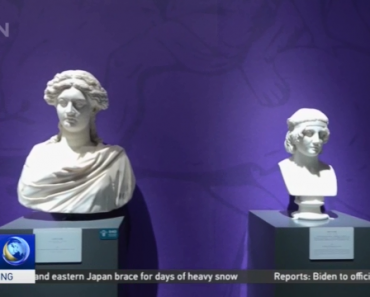Located in the Hisar district of Didim in Aydın province, southwestern Türkiye, the Temple of Apollo is one of the best-preserved temples from the ancient world. Not only is the temple renowned for its preservation, but it also attracts a growing number of visitors each year, with 132,740 people visiting in 2024 alone.
Dating back to antiquity, the temple has been the focus of ongoing archaeological excavations and restoration efforts since 1905. Initially conducted by German archaeologists, these efforts are now overseen by the Directorate of the Miletus Museum, which took charge in 2024. Recent work includes upgrades to visitor pathways, reinforcement of surrounding walls and landscaping efforts to improve the site’s accessibility and preservation.
Dedicated to Apollo, the god of music, arts, the sun, fire and poetry in Greek mythology, the temple is not only remarkable for its architecture but also for its connection to mythological stories. As the god of prophecy, Apollo was believed to offer divination, making the temple a popular destination for those seeking answers through his oracles.
The temple, built in the Ionic style, is the third-largest of its kind in the world. It features a grand inner courtyard, known as the “naos,” where worshippers could gather, surrounded by 112 columns. The structure draws particular attention for its “sacred” courtyard, which stands an impressive 17.5 meters tall.
According to legend, the temple was said to be protected by Medusa, the fearsome creature with snake-like hair and sharp teeth whose gaze could turn anyone to stone.
Popular destination
The Temple of Apollo remains a key attraction for both domestic and international tourists, with visitor numbers rising from 111,761 in 2023 to 132,740 in 2024. Its mythological significance, combined with its well-preserved grandeur, continues to draw crowds from around the world.
Baran Aydın, director of the Miletus Museum, emphasized the temple’s significance as a major religious center in antiquity: “Apollo was a major religious center in antiquity,” Aydın explained.
“It was a place where people from all walks of life – ranging from kings and emperors to ordinary citizens – came to seek answers to their questions about the future through prophecy.”
Visitor testimonials
Many visitors are deeply moved by the temple’s majestic architecture and its connection to ancient history. An Italian tourist, Emre Kurt, expressed his enthusiasm: “We’re thrilled to be here. While similar structures exist in Italy, it’s incredible to see some of them still standing. I’m glad I could show this to my wife.”
Claudia Magnapera, his wife, shared her fascination with the temple: “I was really curious about Apollo and I’m happy to visit a place I’ve wanted to see. It’s beautiful to witness so many structures still intact. I’m truly impressed.”
Katia Troşnova, a Russian national living in Istanbul for three years, specifically came to Didim to visit the Temple of Apollo. She was deeply impressed with what she saw, remarking: “I’m amazed by the scale and beauty of this place. It’s something I’ve always wanted to experience.”








